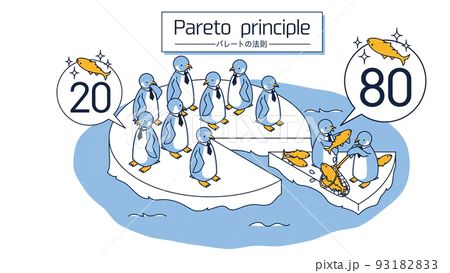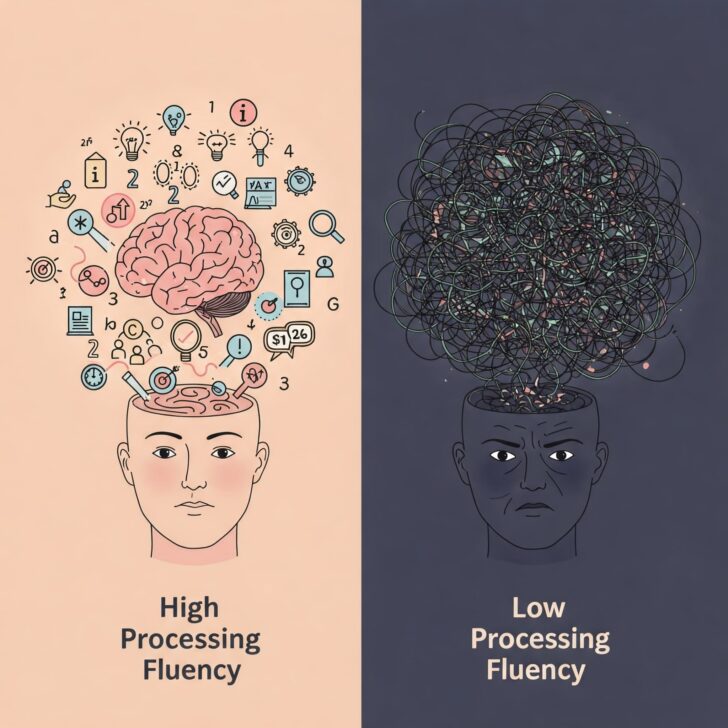
BLOG
2024年09月09日
パレートの法則:少ない要素が大きな影響を与える原則
パレートの法則(別名:80:20の法則)は、全体の結果の大部分(約80%)は、全体を構成する要素の少数の重要な部分(約20%)によって生み出されるという経験則です。これは、多くの現象に当てはまることが観察されており、様々な分野で活用されています。
以下に具体的な例をいくつか挙げ、パレートの法則がどのように現れるのかを説明します。
具体的な例
- 機械の故障:機械全体の故障原因の80%は、機械を構成する部品全体のわずか20%に起因することが多いです。つまり、特定の少数の部品が故障しやすいため、それらを重点的に管理・改善することで、機械全体の信頼性を大幅に向上させることができます。
- 所得税:全体の所得税収入の80%は、課税対象者全体のわずか20%の高所得者層によって納められています。これは、所得分配の不平等さを示す一例であり、税制政策を考える上で重要な視点となります。
- 離婚:全体の離婚件数の80%は、離婚経験者全体のわずか20%の人々が占めています。これは、一部の人々が繰り返し離婚を経験する傾向があることを示しており、離婚問題の対策を考える上で注目すべき点です。
- 試験問題:試験問題全体の80%は、その学科に関する全体の知識のわずか20%で解答可能です。これは、試験対策において重要なポイントを絞って学習することの有効性を示唆しています。
- 文章で使われる単語:文章全体で使われる単語の80%は、全単語数のわずか20%に当たる少数の単語によって構成されています。これは、言語における単語の使用頻度の偏りを示しており、効率的な語彙学習などに役立ちます。
- 都市の交通量:都市全体の交通量の80%は、都市全体の道路網のわずか20%に集中しています。これは、交通渋滞対策などにおいて、特定の主要道路に焦点を当てた対策の重要性を示しています。
- ソフトウェア利用:ソフトウェア利用者全体の80%は、ソフトウェアの全機能のうちわずか20%しか使用していません。これは、ソフトウェア開発において、ユーザーが本当に必要とする機能に焦点を絞ることの重要性を示唆しています。
- 物事の本質:物事の本質の80%は、その全体におけるわずか20%の部分を観察・理解することで把握できます。これは、物事を分析する際に、重要な要素に焦点を絞って効率的に理解することの有効性を示しています。
- よく働くアリ:アリのコロニーにおいて、全体の仕事の80%は、コロニー全体のアリのわずか20%によって行われています。これは、集団における個体間の役割分担や貢献度の偏りを示す例です。
パレートの法則は、重要な少数に焦点を当てることで、効率的な改善や問題解決を促す考え方です。ただし、あくまで経験則であり、常に厳密に80:20の比率で当てはまるわけではありません。状況に応じて柔軟に解釈し、活用することが大切です。
まとめ
パレートの法則は、全体の結果の大部分(約80%)は、全体を構成する要素の少数の重要な部分(約20%)によって生み出されるという原則です。この原則は、様々な現象に当てはまり、効率的な改善や問題解決を促す考え方として活用できます。
Pareto Principle: The Principle of the Vital Few
The Pareto Principle (also known as the 80/20 rule) is an empirical observation stating that roughly 80% of outcomes or results come from 20% of causes or inputs. This principle suggests that a small number of factors often have a disproportionately large impact. The Pareto Principle is applicable across various fields and helps us understand the unequal distribution of cause and effect.
Specific Examples
- Machine Failures: 80% of machine failures are caused by only 20% of the machine's components. Focusing on maintaining and improving these critical components can significantly enhance overall machine reliability.
- Income Tax: 80% of total income tax revenue comes from the top 20% of taxpayers. This highlights income inequality and has implications for tax policy discussions.
- Divorce: 80% of all divorces involve only 20% of people who have been divorced. This suggests a tendency for certain individuals to experience multiple divorces, which is a crucial factor in addressing divorce-related issues.
- Exam Questions: 80% of exam questions can be answered using only 20% of the subject knowledge. This emphasizes the importance of focusing on key concepts when studying for exams.
- Words in a Text: 80% of the words used in a text come from only 20% of the total vocabulary. This demonstrates the uneven distribution of word usage in language and can be useful for efficient vocabulary learning.
- Urban Traffic: 80% of urban traffic is concentrated on only 20% of the city's roads. This highlights the importance of prioritizing traffic management efforts on key roads to alleviate congestion.
- Software Usage: 80% of software users utilize only 20% of the software's features. This suggests that software developers should focus on core functionalities that users truly need.
- The Essence of Things: 80% of the essence of a matter can be understood by observing and understanding only 20% of its entirety. This principle encourages focusing on key elements for efficient analysis and comprehension.
- Hardworking Ants: In an ant colony, 80% of the work is done by only 20% of the ants. This exemplifies the division of labor and unequal contribution among individuals within a group.
The Pareto Principle promotes efficient improvement and problem-solving by focusing on the vital few. However, it's crucial to remember that it's an empirical observation and may not always strictly adhere to the 80/20 ratio. It should be interpreted and applied flexibly based on the specific situation.
Summary
The Pareto Principle states that roughly 80% of outcomes or results come from 20% of causes or inputs. This principle highlights the unequal distribution of cause and effect and encourages focusing on key factors for efficient improvement and problem-solving.
Recommend
-

2025年12月04日
3大AIモデルの比較(2025年12月最新版)
-

2025年09月30日
AI生成 交通事故時の簡易相談サイト
-

2025年08月07日
自転車の道路交通法に関して~知らなかったでは済まされない~
-

2025年07月22日
北海道産野菜ベジタボックス 2025年7月版
-

2025年07月17日
未来は、もう始まっている。あなたの仕事を加速させるAIツールを見つけよう!
-

2025年07月16日
WEBマーケティング
-

2025年05月16日
北海道産野菜詰め合わせセット ベジタボックスサブスク7月ごろより(継続サプライズ)
-

2025年04月29日
心理学の「実と虚について」処理の流暢性とは2025年度版














